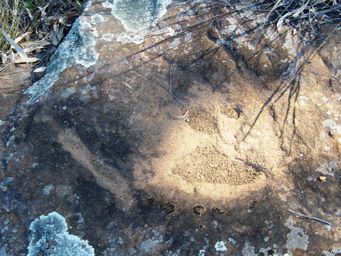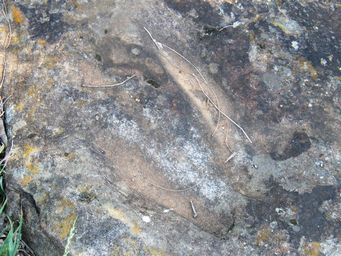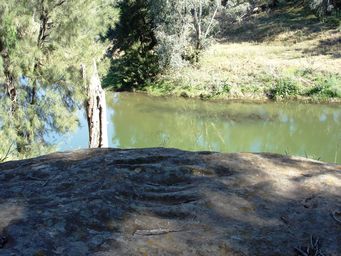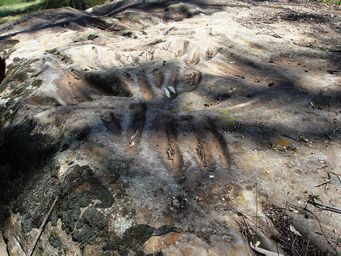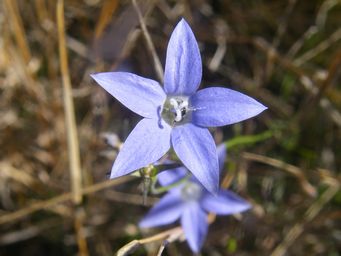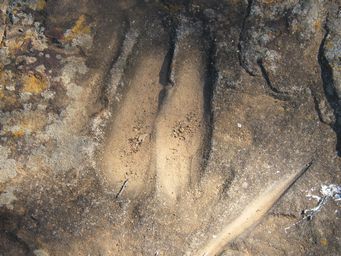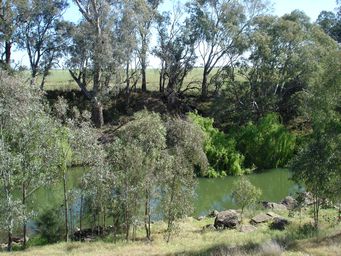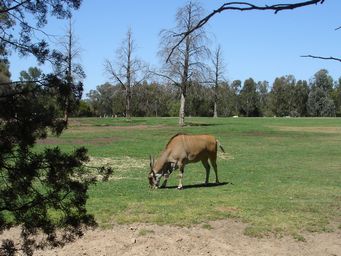Australia So Much to See
Western Plains Dubbo Zoo, New South Wales
Axe grooves are in many rocks along the riverside. There are around 150 grooves along the riverside over about 100 metres.
The Common Eland, found in East and Southern Africa, is the world's largest antelope with males weighing up to one tonne, yet they
can easily and gracefully jump 1.5 metres from a standing start. They graze in herds of up to 500 animals.
Bongo are large striped Antelopes from Africa where the species is mainly found in the Kenyan Highlands. They are critically endangered,
with less than 100 remaining in the wild.
Elegant and lanky Maned Wolves stand ninety centimetres tall. A native of South America, the species is not closely related
to the wolves of North America (at left).
Tours of the Zoo can be seen at the lower right of this map https://taronga.org.au/sites/default/files/content/maps/TWPZ%20Map_Ed16v14_MAPONLY.pdf ,
There are also overnight encounters, and animal encounters https://taronga.org.au/dubbo-zoo/animal-encounters which cost $59 per person.
The majestic horns of a Water Buffalo (at right). The water buffalo or domestic water buffalo is a large bovid originating in
the Indian subcontinent, Southeast Asia, and China. Today, it is also found in Europe, Australia, North America, South America and
some African countries. The wild water buffalo, native to Southeast Asia, is considered a different species, but most likely
represents the ancestor of the domestic water buffalo.
At least 130 million water buffaloes exist, and more people depend on
them than on any other domestic animal. They are especially suitable for tilling rice fields, and their milk is richer in fat
and protein than that of dairy cattle
Size and shaped of groove depend on the purpose. Axe grooves range from thirty to forty centimetres long, ten to fifteen centimetres
wide and one to two centimetres deep. Spear grinding grooves are also about thirty to forty centimetres long, but are only one
to two centimetres wide and deep. Seed grinding grooves are normally oval shaped, up to sixty centimetres long and thirty to
forty centimetres wide, being up to four centimetres deep, with one edge near s small drop off point on the rock, to make collecting
the ground seed easier. All three types occur at this site, but far the most common are axe grinding grooves.
As animal lovers we enjoyed our two day visit to Taronga Western Plains Zoo, Dubbo, and planned to return. More coming soon
with our return visit in 2017, when we see a range of different animals as well as some favourites, and get a better look at some
that were hard to see when asleep during the day.
Resources
Signage at the site
Grinding grooves are a type of Aboriginal site formed as a result of sharpening axe and hatchet edges, sharpening spears, and occasional
seed grinding. They are most often found in areas that have suitable abrasive stones close to water.

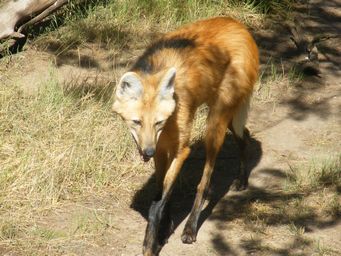

This was taken early in the afternoon, when few campers were there (above left). We were soon surrounded, and by late afternoon,
those arriving just drive out again. It is only a small area.
The Macquarie River at Terramungamine Reserve free
campground where I swam to cool down after a hot day at the Zoo (above right).
Above left appears to be older grooving. The ages of these grooves is not known. Above right wildflower Wahlenbergia.
It is estimated that it would take from six to thirteen hours to make one groove. Axe grinding methodology dates back to around 26,000 in Australia, the oldest in the world.
Checking Camps Australia Wide I found Terramungamine Reserve and asked a tradesperson at Brocklehurst about it. He gave us a good
recommendation to go there as a pleasant safe place to stay and to leave the caravan during the day. Terramungamine is fourteen kilometres
from Dubbo, being four kilometres west of Brocklehurst, a light industrial area serving Dubbo on the Newell Highway ten kilometres
north of Dubbo and 57 kilometres south of Gilgandra. Flush toilets with water supplied from a tank, but no water for campers. Fireplaces
and bins. Pets permitted. Canoe or swim in a pool on the river. Campground fills by late afternoon, and we were soon well surrounded.
This small free campground is along the Macquarie River alongside an Aboriginal cultural site. Walk through the cultural site along
the river and see axe grinding marks on rocks.
Subsequent to our visit, this small campground was made 24 hour only. While
we were there, long term camping backbackers who were working in the area had to be moved on, and a decision was made by council to
allow 24 hour stays only. Other alternative camping options are further out of town, such as the small unserviced riverside
Redbank Reserve, a further eight kilometres west of Terramungamine.
We had been some time camping in National Parks and quiet campgrounds, so none of the in-town caravan parks appealed. There are five
caravan parks within the Dubbo townsite and all are adjacent to highways. The Big 4 Parklands is the closest caravan park to the Zoo. Alternatively, Red Earth Estate (Vineyard) also provide camping in their vineyard. Some powered sites, and town water is available. No amenities. Fees apply. This is not far from the Zoo.
